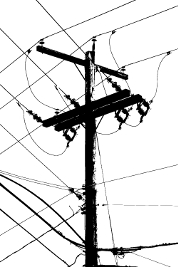Nuclear ignored in energy shift
 The Australian Energy Market Operator (AEMO) has released its 25-year roadmap for transitioning the National Electricity Market (NEM) to net zero emissions by 2050.
The Australian Energy Market Operator (AEMO) has released its 25-year roadmap for transitioning the National Electricity Market (NEM) to net zero emissions by 2050.
This roadmap, known as the Integrated System Plan (ISP), has been developed over two years with extensive consultation, analysis, and review, involving 2,100 stakeholders and considering 220 formal submissions.
It shows that renewable energy sources like hydro, rooftop solar, and wind farms are already supplying 40 per cent of the electricity in the national grid annually. AEMO emphasises the need to build on this progress to ensure more Australians benefit from clean energy.
It also notes that Australia’s coal-fired power stations are rapidly retiring. The ISP predicts that all coal-fired generators will close by 2038, necessitating the urgent development of replacement power sources to maintain grid reliability.
The ISP confirms that renewable energy, supported by storage, is the lowest-cost method for supplying reliable and affordable electricity. It supports solar and wind projects as they are quick to build, inexpensive to operate, and utilise abundant natural resources.
The roadmap anticipates that more Australians will adopt rooftop solar systems paired with home batteries, reducing reliance on grid electricity and lowering overall energy costs.
It also says batteries and pumped hydro will play crucial roles in maintaining grid reliability, with gas providing backup power during periods when renewables are not available. Gas usage in electricity generation is expected to decline significantly by 2030.
Despite a lot of recent bluster, the ISP does not include nuclear power as a viable option due to its high costs and lengthy development timelines, which do not align with the urgent need to replace retiring coal plants.
Central to the ISP is the Optimal Development Path (ODP), which proposes a mix of grid-scale generation, storage, and transmission solutions. This approach requires an annualised capital investment of $122 billion until 2050.
AEMO CEO Daniel Westerman described the ISP as crucial for navigating Australia's energy transition, ensuring reliable and affordable electricity for Australians.
“The ISP is a roadmap to navigate Australia’s power system through the energy transition, providing Australians with reliable electricity at the lowest cost,” said Westerman.
The plan includes the construction of nearly 10,000 km of new transmission lines by 2050, with 2,500 km already underway. These projects, costing $16 billion, are projected to save consumers $18.5 billion in avoided energy costs and contribute $3.3 billion in emissions reductions.
The implementation of these transmission projects is expected to support over 60,000 energy jobs over the next two decades.
AEMO says gas will continue to play a critical role in backing up renewable energy when it is not available.
The ISP acknowledges the challenges and risks associated with the energy transition, including delays in approval processes, investment uncertainties, cost pressures, social licence issues, supply chain disruptions, and workforce shortages.
To mitigate these risks, the analysts say early community engagement and effective consultation on projects are deemed essential.
“There is a real risk that replacement generation, storage and transmission may not be available in time when coal plants retire, and this risk must be avoided,” Westerman said.







 Print
Print